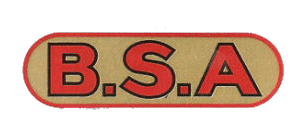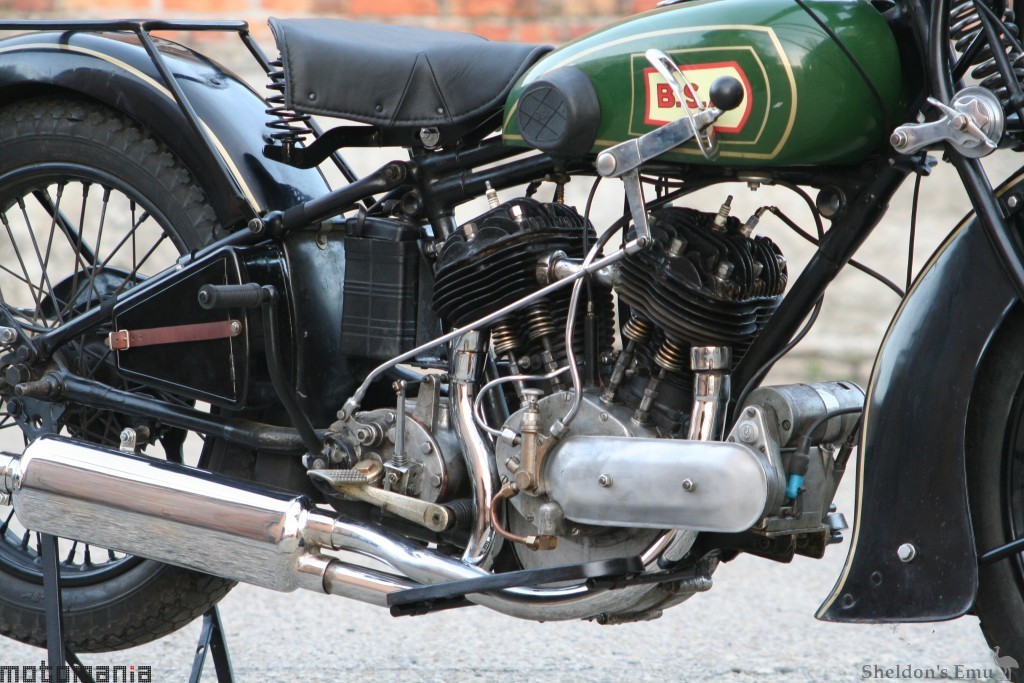


Specification (1927 Model G27)
Engine. Twin Cylinder 9.86 h.p. (986 c.c.), 80 x 98 m/m bore and stroke. Aluminium alloy pistons.
Frame. Designed for sidecar work, integral sidecar attachments. Head fitted with B.S.A. steering damper.
Spring Fork. B.S.A. wide type fitted with shock absorbers.
Brakes. Internal expanding type, 7in. diameter. Rear operated by heel pedal on independent fulcrum.
Tyres. Dunlop cord, 26in. x 3.25 in. W.O.
Wheels. Quickly detachable and interchangeable. Taper roller bearings to hubs.
Transmission. 5/8in. x 3/8in. roller chains front and rear. Front drive enclosed. rear drive efficiently protected. Cast aluminium chain cases extra. Cam-faced cush drive fitted to engine shaft.
Tank. Capacity : Petrol, 2½ gallons ; Oil, 3 pints.
Lubrication. Mechanical pump, sight feed on tank. Hand pump also fitted. Oil supplied to front chain by bypass valve on timing case. Hubs, fork links, etc., fitted with grease gun nipples.
Gear Box. B.S.A. Three-speed. Enclosed kick-starter mechanism. Screw adjustment of box position for accurately set ting chain tension.
Saddle. Terry spring seat or Brooks supple seat B195.
Handlebar. Touring or Sporting pattern, adjustable.
Finish. Tank in usual B.S.A. colours. Black enamel and bright parts heavily plated.
Dunlop Balloon Tyres extra
BSA introduced a 770cc V-twin to the range for the 1920 season, the Model E. It proved to be very popular as both a powerful sidecar hauler and a fast solo machine.
"Both the de Luxe and Colonial machines have been expressly designed for Sidecar work with heavy loads. For high speeds or in difficult country the extra power given by the larger engine will add materially to the rider’s comfort and the average road performance. The BSA 9.86hp twin cylinder model is a typical example of the high standard of perfection to which the modern motor bicycle has been raised. As a super touring combination, it worthily upholds the highest traditions of British Engineering." ~ BSA Advertisement, 1927.
The "World Tour" designation appeared in 1929.